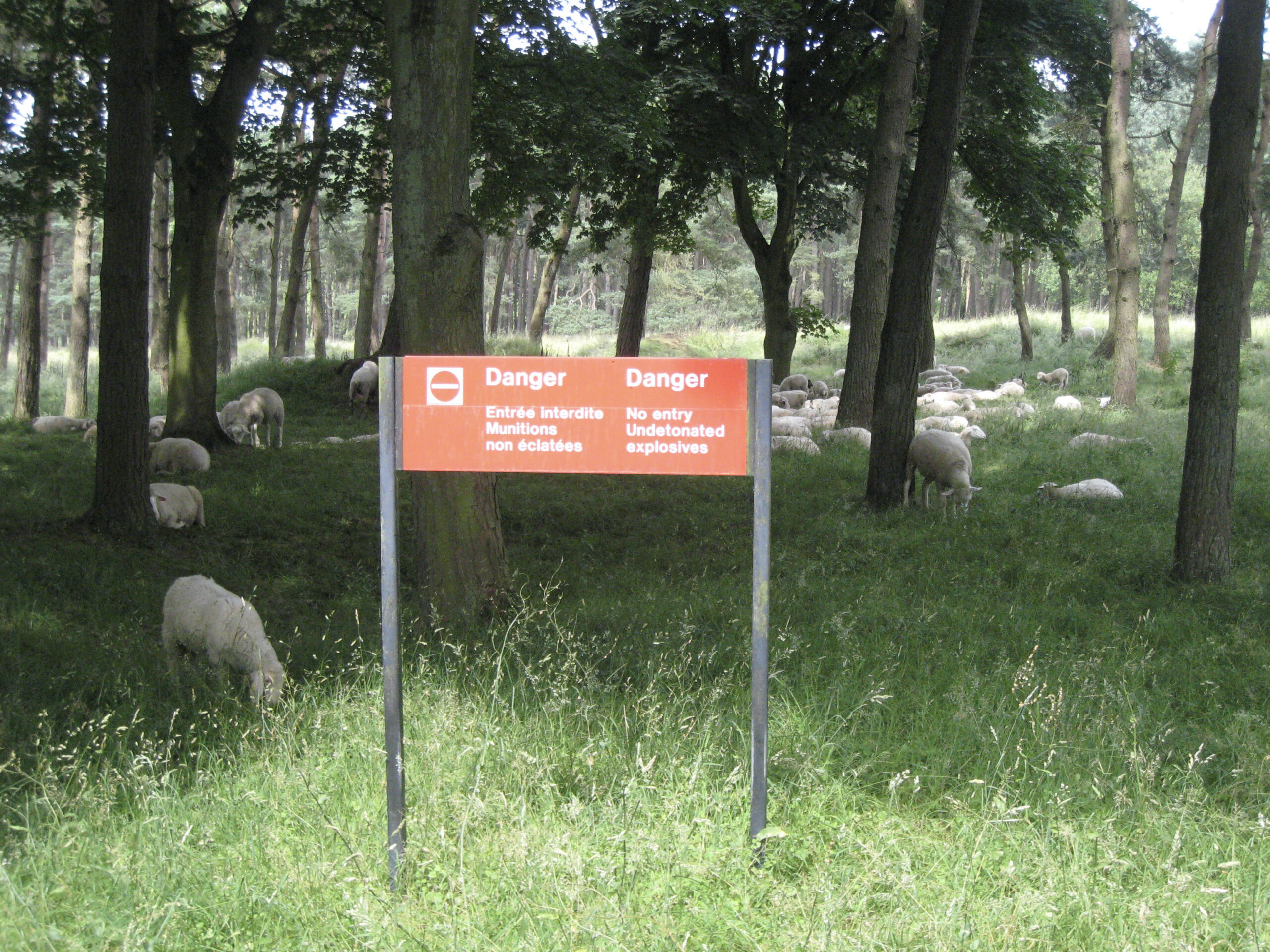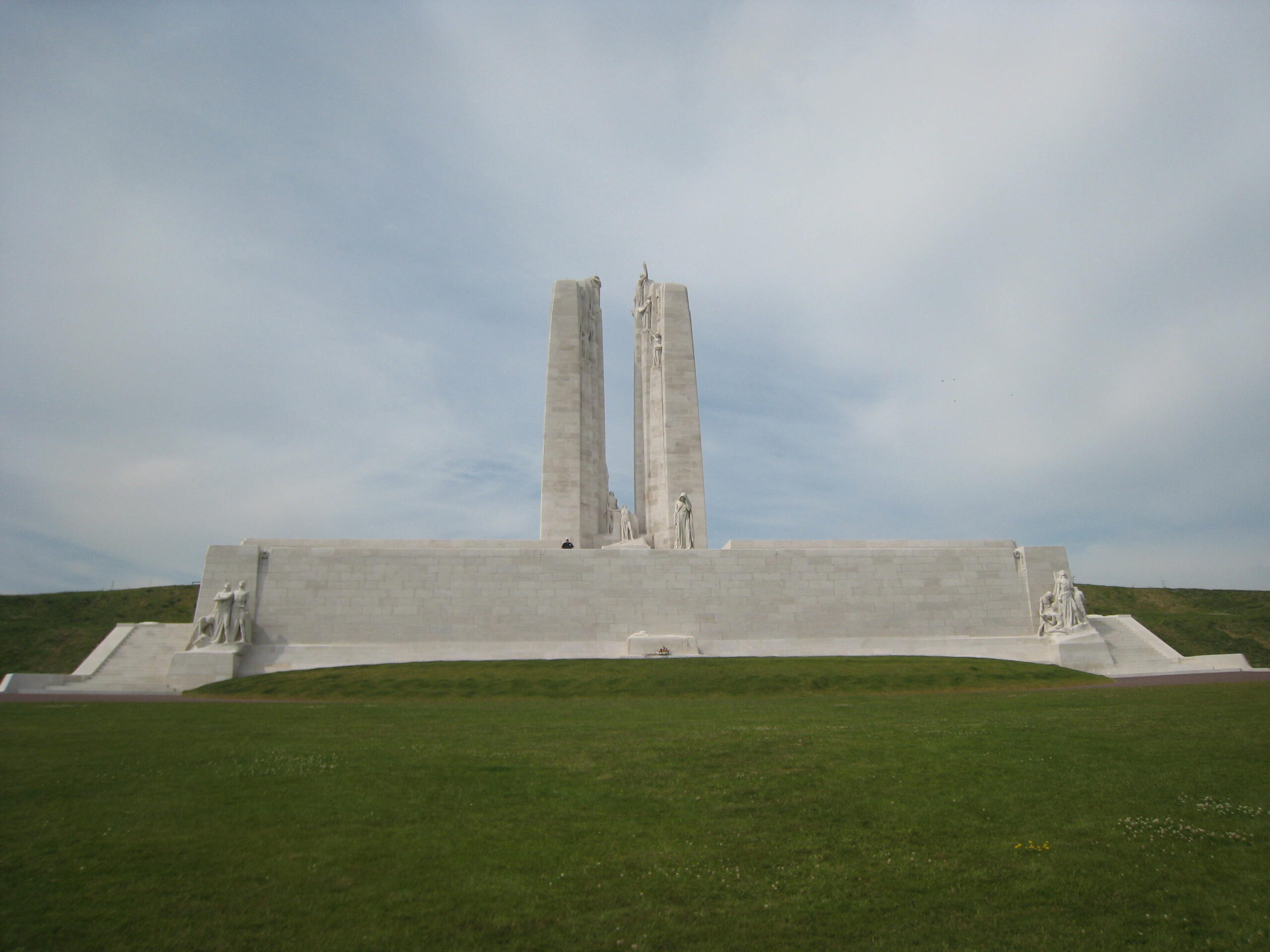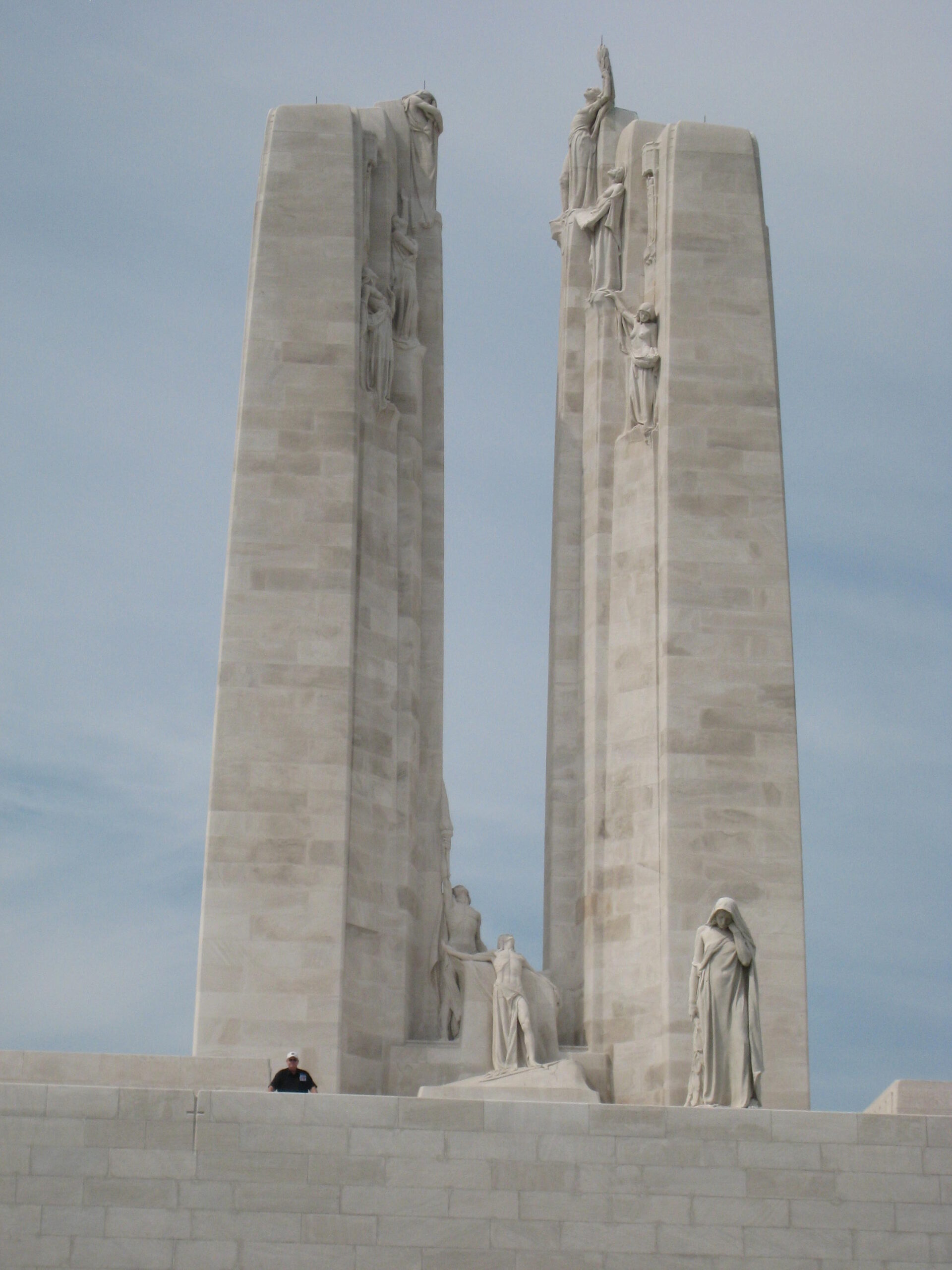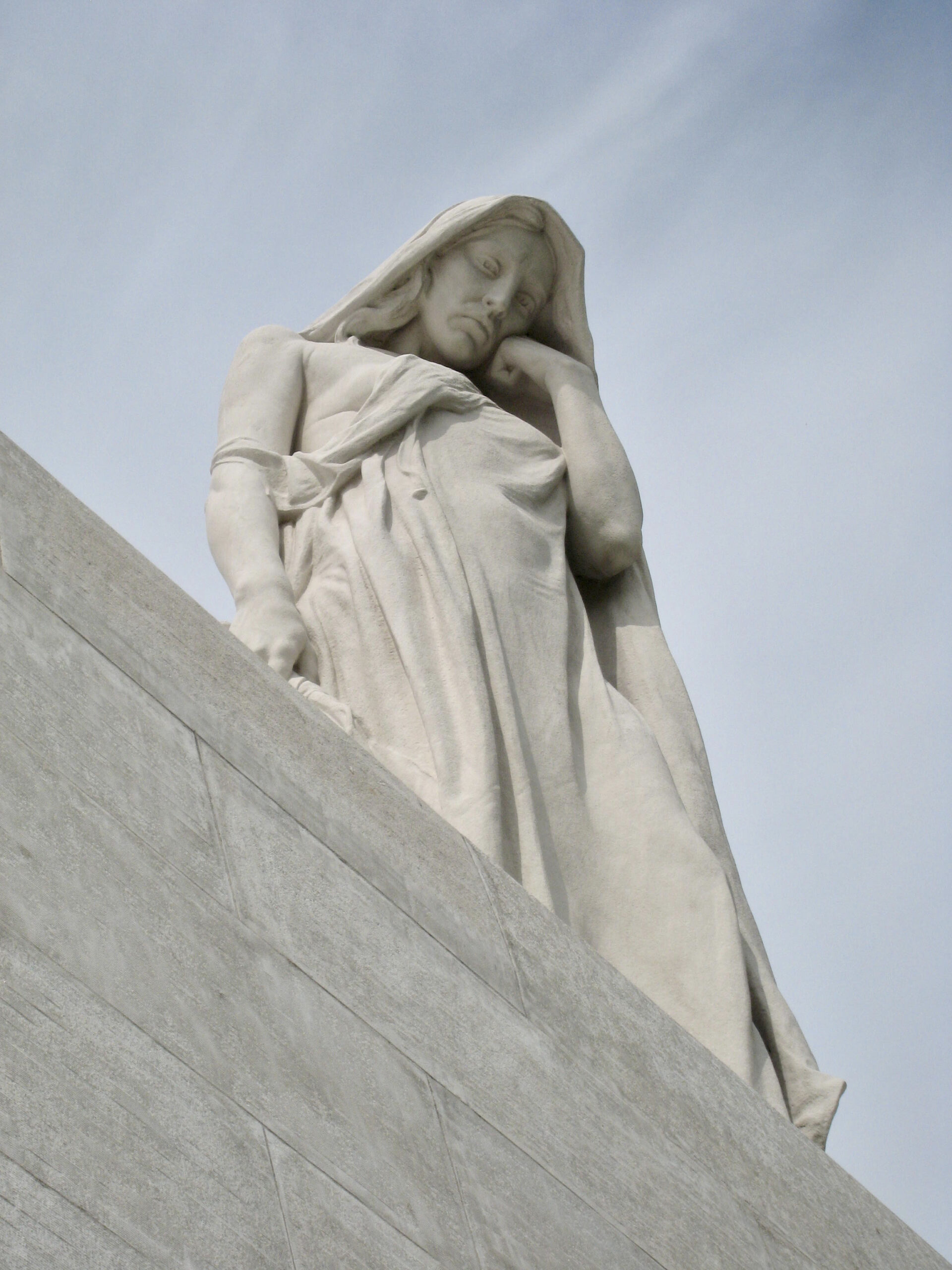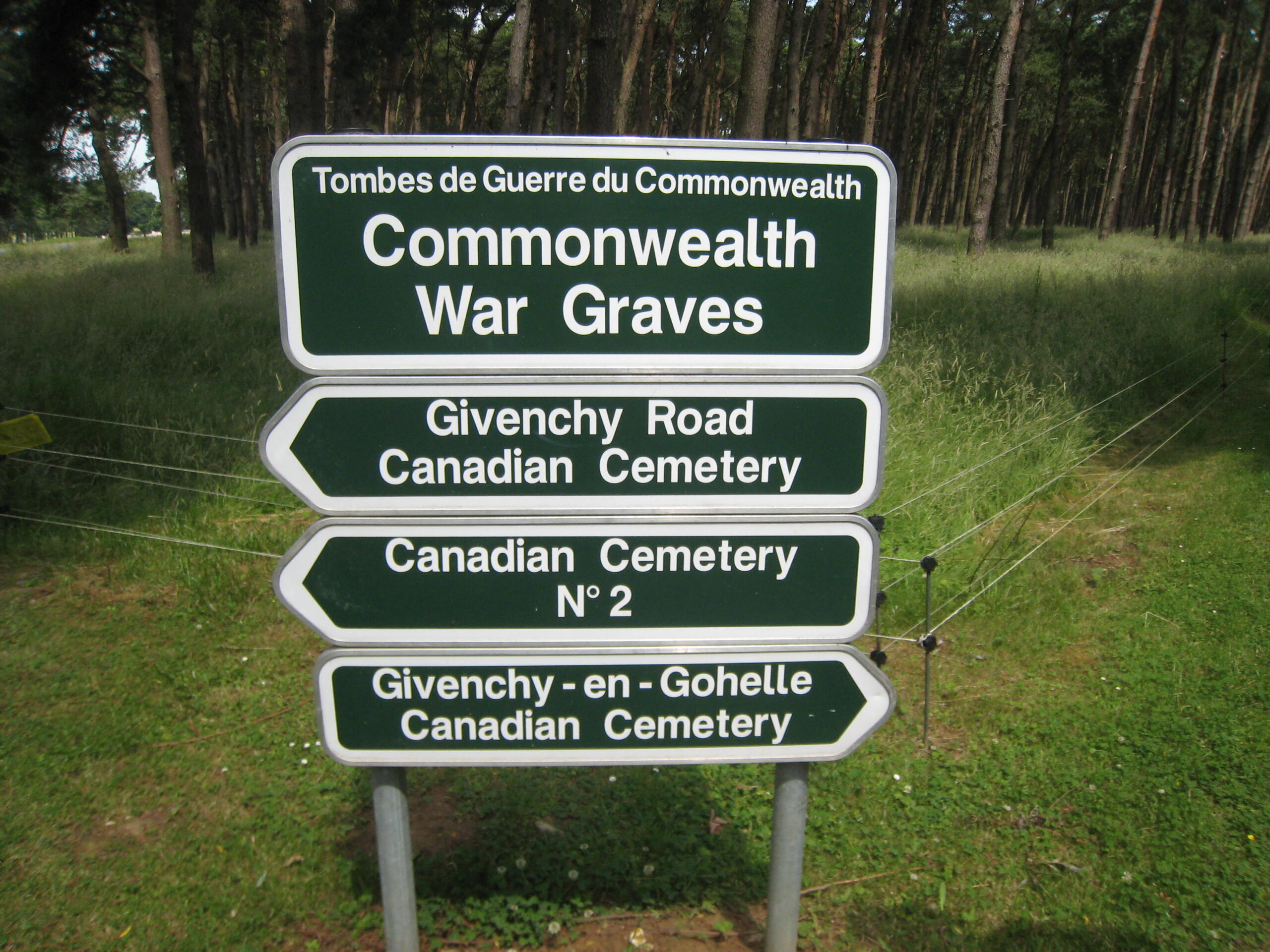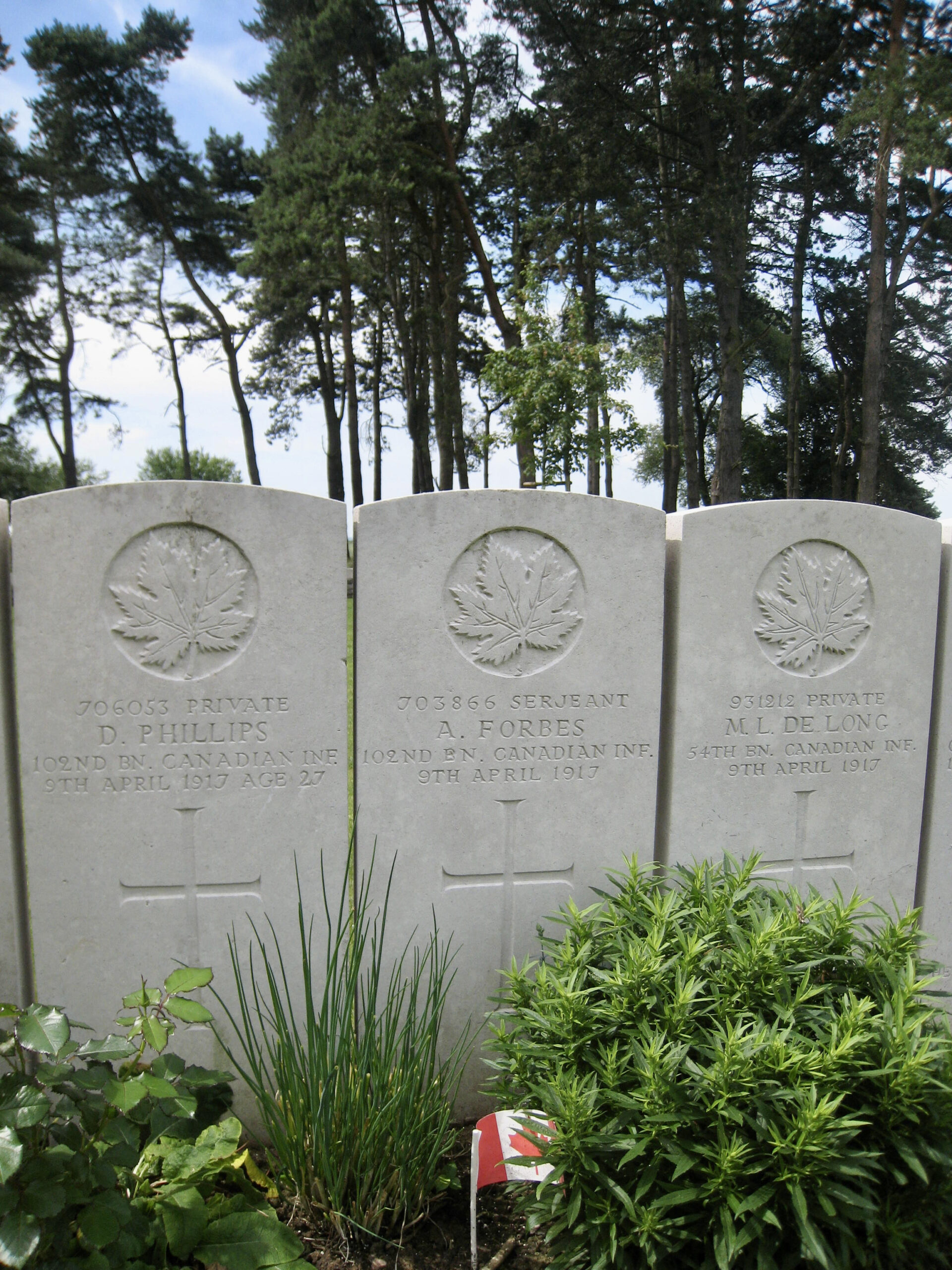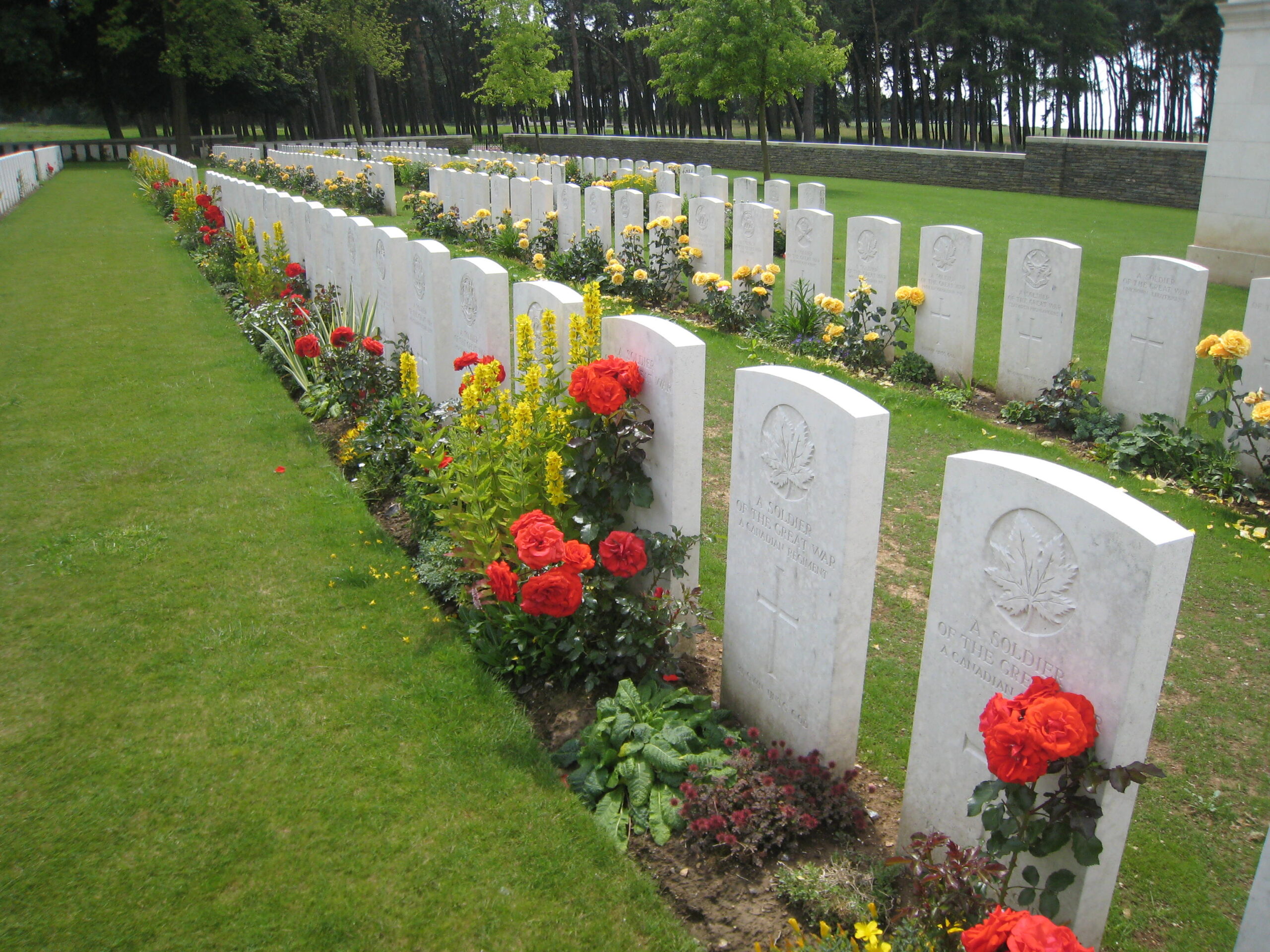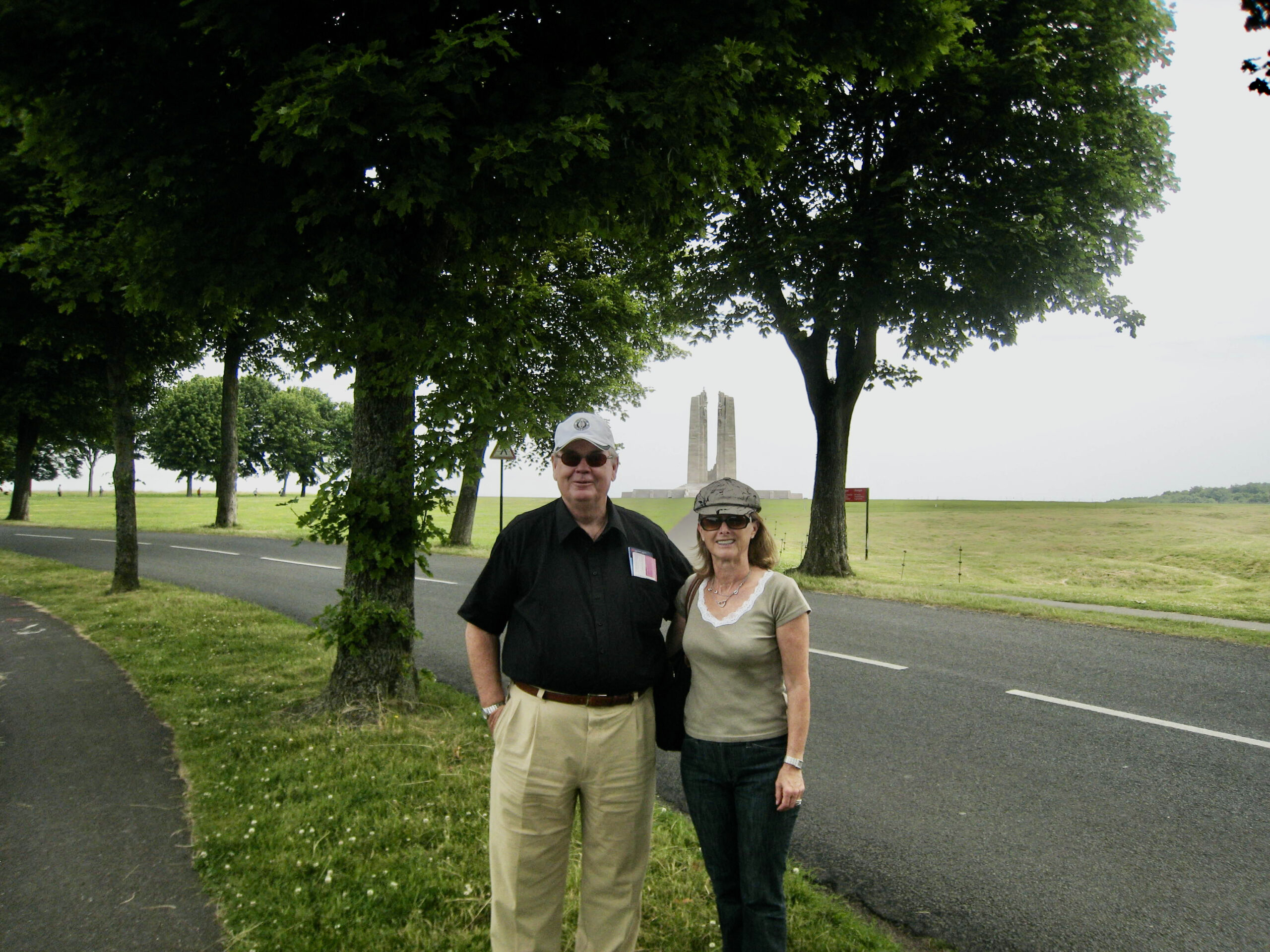We turn onto Rue des Canadiens, but we are not in Canada, not even in Québec. Ten minutes later, the forest road opens onto the National Historic Site of Canada on the plain of Douai. We are in Vimy, ten kilometers north of Arras, in northern France. On our right, the 27-meter-high twin towers of the Vimy Ridge Memorial, representing Canada and France, aim at the sky like a futuristic spaceship ready to launch.
With Gratitude
Alongside our silent walk to the monument, sheep graze the mounded land among red posts signaling Danger – Unexploded munitions: A reminder of the million shells that pummeled the land. I ponder the fate of the men who fought in WWI. I think of my grandfather who defended his homeland in the Somme, leaving most of his soul somewhere in the trenches, only to be called again as a border patrol (near Geneva) during WWII. But I am on Canadian soil to remember the men who defended my homeland, far from theirs, and where so many of them lost their lives. Gratitude isn’t enough of a word sometimes. But gratitude is why, in 1922, France ceded 250 acres—for the Vimy memorial and battlefield site—to the people of Canada “freely and for all time.”
By destroying this German strategic point (between Arras and Lens), the Canadian troops not only gave a turning point to the Allied Forces, but they also validated Canada as a nation.
The Canadian Strategy
The memorial stands on Hill 145, the highest and the one the Canadians first captured, on April 9, 1917. Three days later—assisted by the British 5th Infantry Division—they reclaimed the entire ridge.
After the Germans took the ridge in October 1914, the French tried to regain it in 1915. A year later, the British did too, but had to retreat before their offensive. Some 150,000 French and British casualties later, the Canadians then engineered a new strategy: attacking simultaneously under and above ground.
They dug a five-kilometer subway of tunnels under the German lines and set up the creeping barrage concept. Every three minutes, the infantry advanced 100 yards under the protection of the artillery—the soldiers called it the Vimy Glide. The speed and magnitude of the attacks took the Germans by surprise, isolating them in their dugouts and away from their machine guns.
Although the artillery was heavier by 1917, and aerial reconnaissance—including by kite balloon—provided intelligence about German positions and artillery sites along the eight-kilometer-long ridge, there would be no victory without heroism. The first six minutes sacrificed sixty percent of the Canadian forces. Some had been young civilians when they volunteered, but by the time they arrived at the Vimy Ridge battlefield, they were the survivors of the abominable battle of the Somme that had lasted nearly four months. When the Vimy Ridge bloody battle was over, 10,548 among them were killed or wounded.
Although we can’t visit the tunnels due to temporary partial flooding, I try to imagine the soldiers spending a whole winter ten meters underground, rehearsing the daring attack with a model battlefield and trench system. Muddy, cold, and enduring various afflictions, they had readied themselves to face the worst. Photographs of their drawings and poems engraved in the walls of those tunnels stand as a poignant testimonial of their will.
A Canadian Battlefield
A passionate about history, my husband wanted to visit Vimy Ridge. I confessed not knowing about it, perhaps because in my family my grandfather evidenced enough those horrible years. But for Canadians, the Vimy Ridge victory is a source of national pride. As members of the British Empire, Canadian soldiers were always embedded in the British Army, hence every conquest was a British victory. Vimy Ridge changed that.
For First Division Arthur William Currie—the first appointed Commander of the Canadian Corp—keeping the four divisions of the Canadian Corps together was a matter of principle. Canada Prime Minister Robert Borden had committed hundreds of thousands of men in the past and, reportedly, with little British appreciation in return. Even if the risk was high, Vimy Ridge could become the first all-Canadian military victory. “In a few minutes I witnessed the birth of a nation,” Brigadier-General A.E. Ross would later say.
To All Canadian Soldiers and Military Service Personnel in Europe
The closer we get, the more impressive is the memorial. Conceived in Seget limestone by Canadian sculptor and architect Walter Seymour Allward, it rises 65 meters above the Douai plain, on a massive base of more than 15,000 tons of steel-reinforced concrete.
A maple leaf engraved on one of the four-sided towers symbolizes Canada, and a fleur-de-lys—the symbol of the French presence in Canada—on the other is for France. At the top, two figures represent Peace and Justice, and below, two more represent Truth and Knowledge. Carved around them are the shields of Canada, Britain, and France. But most poignant is the largest one representing a bereft woman in a hooded wrap, the symbol of Canada mourning her dead. On a sarcophagus next to the base, a French veteran organization has laid a bouquet. More than showing deference, they somewhat appease my heavy heart.
The Vimy Ridge Memorial stands as a tribute to the 11,285 Canadians who served during WWI—soldiers and military service personnel—and lost their lives in Europe. The names of those whose final resting place is unknown are engraved on all four sides of the base. With a respect as overwhelming as my emotions, I read one name after another, and wish I could read them all.
Note: This is not the topic of this article but, not forgotten are the 117,000 American soldiers who died, among the 2,100,000 who were deployed under the Power Ententes.
Original article published November 2013 – The West Vancouver Beacon
- Sheep are groundkeepers at Vimy Ridge. (MCArnott)
- Vimy Ridge Memorial in Pas-de-Calais, France (MCArnott)
- The limestone Vimy Ridge Memorial features 21 sculptures. (MCArnott)
- “Canada Bereft” the statue symbolizing Mother Canada at Vimy Ridge (MCArnott)
- More than 7,000 Canadian soldiers are buried in the 30 Commonwealth War Graves sites, within a 20-km radius from Vimy RIdge. (MCArnott)
- One-hundred graves stand in the enclosed Givenchy Road Cemetery. (MCArnott)
- Vimy Ridge Canadian Cemetery No. 2 (MCArnott)
- At the Canadian Historic Site in Vimy, France (Photo Arnott)
Sources:
https://www.warmuseum.ca/the-battle-of-vimy-ridge/
https://www.veterans.gc.ca/eng/remembrance/battles-and-stages/battle-of-vimy-ridge
https://www.vimyfoundation.ca/learn/vimy-ridge/
THANK YOU FOR THE FOLLOWING COMMENTS! Your memories and emotions honor the sacrifice of those we remember:
From Judy F.: Well-written and informative. In the late ’70s, our family visited the site and found the monument and surrounding grounds very impressive and particularly moving. In WW II Lance’s father was stationed in Belgium and, at some point, also visited Vimy and had found it to be a very emotional experience. He had photos taken on the monument with fellow Canadian soldiers.
From Carolyn N.: I have read your article so appropriate to this somber week and I compliment you on the way you have brought this place to life. I traveled the Normandy battle route in 1962 as the only Canadian on an English Art and Architecture summer tour. It was my good fortune to sit next to the tour leader as we passed that way and when he asked me where I was from, and I told him Vancouver, he revealed to me that his father had gone to France as a Seaforth Highlander out of Vancouver and was one of six of his battalion who survived the battle at Vimy. With so much loss he rose from private to officer overnight. When the War ended, he returned to England where he married, and his son Joseph was born. I met him at the Courtauld Institute of Art History in 1963 […] and we became friends. He died in 1994 but we always think of him and that strange encounter with such a personal Vimy story. The great memorial was not yet built.
Dianne B.: An excellent tribute to our Canadian as well as French and British soldiers. You captured the essence of the feelings that we all share as we approach Nov. 11. Thank you for sharing this beautiful piece of your work.
Harry S.: This is so moving and heart-rendering…
Dorothy K.: I had uncles from both countries who served in WWI and many relatives from both who served in WWII. My Dad served in WWI and stayed on in France, after the Germans surrendered, for a year longer than most.

